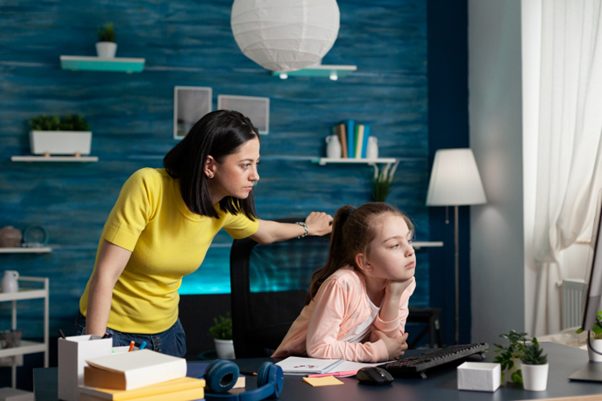As parents, we’ve all been there: We can watch our cutiepie progress from having the joyous dispositions, playing and moving around to have, cry all through and even through tantrums. What’s going on? The answer might be overstimulation. In this blog post, I will be explaining what overstimulation is, how it affects babies and preschoolers and finally, most importantly, how to address it.
Table of Content:
- What is Overstimulation
- Overstimulated Baby
- Create a Calm Environment
- Establish Routines
- Practice Sensory Breaks
- Teach Self-Regulation Techniques
- Monitor Screen Time
- Plan Ahead for Stimulating Situations
- Recognize and Respect Your Child’s Limits
- Use Transitional Objects
What is Overstimulation?
Imagine your brain as a cup. Throughout the day, it fills up with experiences, sounds, sights, and feelings. For adults, our cup is quite large, and it takes a lot to make it overflow. But for preschoolers, that cup is much smaller. However, when it gets full, it overflows and that is overstimulation.
Over stimulation is a state which simply means that the child is immersed in a situation and given more sensations than they are able to comprehend. This sensory overload can come from various sources:
- Visual stimuli: Bright lights, flashing screens, or busy environments
- Auditory stimuli: Loud noises, constant background sounds, or too many people talking
- Tactile stimuli: Uncomfortable clothing, too much physical contact, or certain textures
- Olfactory stimuli: Strong smells or too many different scents
- Vestibular stimuli: Excessive movement or changes in balance
The nervous system gets overloaded when a child gets excessively stimulated, and, as a result, the child enters the “fight, flight, or freeze” mode. This can manifest in various ways, such as:
- Crying or screaming
- Throwing tantrums
- Becoming clingy or withdrawn
- Showing aggressive behavior
- Having difficulty sleeping
- Refusing to eat
Knowing what overstimulation is can help you as a parent to assist your preschooler in overcoming this hard hump. But what about younger children? In order to explain to what extent overstimulation may affect babies, it is now high time to turn attention to this problem.
Overstimulated Baby

However, parents with preschool kids should note that sensory overload is not only seen in young children but can affect infants too. In fact, oversaturation of stimuli is even more threatening for babies’ nervous systems than for older kids or adults.
An overstimulated baby might show signs such as:
- Turning their head away from stimuli
- Arching their back
- Clenching their fists
- Crying inconsolably
- Falling asleep suddenly (as a coping mechanism)
By knowing these signs exhibited by babies, you can develop more sensitivity as your child advances to preschool ages. A lot of the ideas that we’re going to be going over for helping preschoolers manage overstimulation can apply to babies as well.
That being said, let me take you through practical ways to manage overstimulation in babies and preschoolers.
Create a Calm Environment
Consequently, one of the most effective ways in which one can reduce overstimulation is by creating an atmosphere in the house. Consider these ideas:
- Use soft, warm lighting instead of harsh overhead lights
- Keep background noise to a minimum
- Organize toys and reduce clutter to create a visually calm space
- Use calming colors like blues and greens in your child’s room
Establish Routines
It is always very helpful for preschoolers to have some sense of predictability in their current environment. Fixation on time issues concerning meals, play, and face-to-face time with parents in the form of a very rigid schedule. This structure helps your child to be in a position to know what is expected of him or her thus reducing cases of anxiety and chances of overstimulation.
Practice Sensory Breaks
Have a more organized day with more regular sensory breaks. These may be periods of inactivity where your child can ease off for a while. Some ideas include:
- Reading a book together in a cozy corner
- Doing some simple yoga stretches
- Listening to soft music
- Playing with kinetic sand or playdough
Teach Self-Regulation Techniques
Teach your child how to change tune or regulate his own emotions at the preschool going age. You can introduce simple techniques like:
- Deep breathing exercises (have them pretend to blow out candles)
- Counting to ten
- Using a “calm down jar” (a bottle filled with water and glitter)
Monitor Screen Time

On the one hand using screens can be informative and fun on the other hand it is a major cause of information overload. These include switching off screens in school, using electronic devices for limited time in a day, embracing screen free activities before bedtime.
Plan Ahead for Stimulating Situations
If you know you’ll be in a potentially overstimulating environment (like a birthday party or a busy mall), plan ahead:
- Discuss what to expect with your child
- Bring comfort items (like a favorite toy or blanket)
- Plan for frequent breaks or a possible early exit
Recognize and Respect Your Child’s Limits
Every child is different. Concentrate on your preschooler’s distinct signs of stress and self-remediation effort. It is not embarrassing if you find yourself oversensitive to stimuli to an event or an activity; you can always excuse yourself.
Provide Physical Outlets
It was found that physical activity enables the preschool children to interact well with their environment in terms of controlling sensory stimuli. Play outdoors daily, have dancing and jumping or create simple races or mazes inside your home.
Use Transitional Objects
If your child is transitioning between settings or activities assure him/her to take along a transitional object like a teddy bear or any toy. This may well provides an individual with a sense of security which is always useful in a climate that may prove to be volatile.
Practice Mindfulness Together

It is possible to teach mindfulness in preschooler via some basic exercises. This could be as simple as letting the patient focus on the feeling their feet on the floor or on the breath that is entering their lungs and exiting their body.
Note that the strategies outlined herein on how one can minimize over-stimulation are activities that you as a parent and your child will have to learn. Also, let me remind you, it might take some time before both of you get used to this new change, so do not get upset with yourself and your little one. One may need to be content with small gains and not feel discouraged when they are set back for some time.
In the ways stated and explained above of dealing with overstimulation, you are endowing your child with essential skills in regulating their feelings and sensations. All these skills should prove very useful to them not only as they go through their preschool years but indeed throughout their subsequent years of life.
Child care is not a joke, especially with the child in the preschool age; however, babysitting is one of the most rewarding and fulfilling responsibilities that any mother can ever have. When you guide your child to manage overwhelming sensation, you are building up their ability to cope, self-awareness, and ability to reason that are qualities which are so vital in life.
Therefore, the next time you feel that your kid is overwhelmed, just take a deep breath and remember these hints and reminders, for you are well equipped to help your kid conquer this time. Oh, yes, you do, and your preschooler is fortunate indeed to have a parent so considerate and insightful!
For more such interesting blogs, Visit EuroKids














